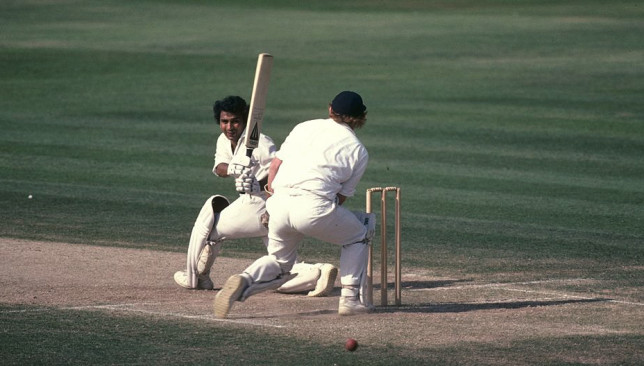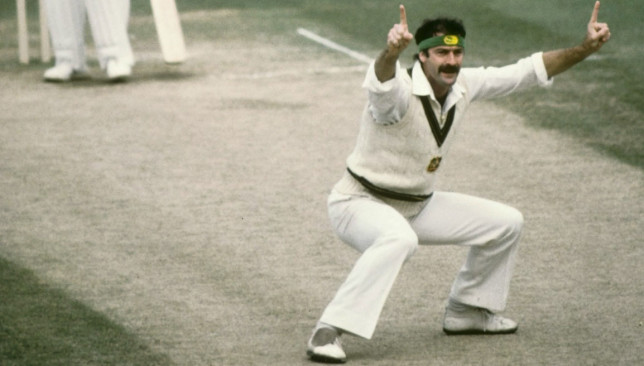Given the primary contest in top level cricket is between two international sides, rarely do fans get to see the best players from all over the world assembled into one star-studded line-up. The composition of numerous ‘World XIs’ is an activity that every cricket lover has engaged in at one point or another.
It is a function of fantasy and wish fulfilment – the natural desire of fans to see the best players in the sport combine into one all-conquering squadron. Sadly, though, one does not often see World XIs in action. They are products of the mind, not governing bodies, and are mostly assembled for tour or benefit games – with regular international cricket’s sense of competitive purpose absent from the proceedings.
Strangely, though, one of society’s great shames bred one such team. After South Africa’s tour of Australia in the early 1970s was cancelled following the decision to ban the African side over apartheid, a hastily cobbled together series of five ‘Tests’ and three one-day games was arranged between Australia and an even more hastily cobbled together team named the ‘World XI’.
During this unofficial, quasi-Test series of a sporting contest, Melbourne bore witness to one of the sport’s greatest ever batting performances. Garry Sobers, the West Indian great, hit a peerless double century in the third ‘Test’ at the Melbourne Cricket Ground in the new year of 1972.
As this legend of the game turns 80, we revisit the time he recovered from two years of poor form and led his eclectic band of teammates to victory by 96 runs over the rampaging Australians in their own backyard.
BACKGROUND

Sunil Gavaskar was one of the Indian players in the World XI line-up.
The World XI were an interesting bunch. Their squad contained at least one member from each Test-playing nation active at that time – including South Africa, the side that was meant to tour Australia before the controversy. Sunil Gavaskar, Bishan Singh Bedi, Zaheer Abbas, Intikhab Alam, Tony Greig, the Pollock brothers, Clive Lloyd and, of course, Sobers were among them – some of the best-known cricketers in the world, in short.
The Australians, on the other hand, were preparing for the upcoming Ashes series, set to begin in the English summer of 1972; they already had been defeated 0-2 by the old enemy earlier in the year. Prior to that, Australia had been summarily thrashed on their tour of South Africa (the African country’s last series before their ban), whitewashed 4-0, with Graeme Pollock and Barry Richards in particular contributing to Aussie misery.
The various matches on the itinerary – first-class, Test and one-day games – were all mixed haphazardly, meaning the World XI were subject to sudden, bizarre changes of tone, mood and venue. The second ‘Test’ at Perth, for example, was followed by the first one-day game, also at the same venue, and three days after that, the tourists were playing South Australia in a tour game at Adelaide.
Perhaps the hero of the Melbourne ‘Test’ was thrown off-kilter by the rapidly shifting match demands and situations. Sobers, having made his debut way back in 1954, was already 35 years old at that point but still going strong – 7373 Test runs and 205 wickets (this series was essentially a string of exhibition matches, and therefore Sobers’ numbers in them do not count towards his career Test figures) before the tour, including two hundreds in the last series at home to India.
But his performances going into the Melbourne ‘Test’ had been curiously off-colour: Sobers, a veteran of 81 Tests, looked disproportionately out of his depth. In the first two ‘Tests’, he had made 68 runs in four innings, with a highest score of 33. His four wickets had come at the cost of 42.5 apiece.
The first ‘Test’ at Brisbane was drawn, while Australia romped home in the second by an innings an 11 runs, the fast bowler Dennis Lillee grabbing 8-29 in the World XI’s first innings (Sobers: 0).
It was in these circumstances that the game at Melbourne began on New Year’s Day 1972. The World XI, captained by Sobers himself, won the toss and chose to bat first.
SAME OLD STORY

Australia’s Lillee was the chief tormentor of the World XI line-up.
In his autobiography, Gavaskar called it a somewhat surprising decision, as the MCG pitch had a reputation for playing quick the first morning and scores from the Sheffield Shield games earlier in the season suggested that a big first innings score was unlikely.
Lest it be forgotten, the Australians had a few stars of their own, and Lillee was about to show the visitors just how quick the wicket could play. Seemingly unsatisfied with grabbing 12 wickets in the previous game at Perth, the fast bowler added another five to his tally in the World XI’s first innings.
Lillee’s speed and precision removed Hylton Ackerman (clean bowled for 0), Gavaskar (38) and Graeme Pollock (8). To cap it off, the Australian also dismissed Sobers, caught by Keith Stackpole at second slip for a first-ball duck. The World XI crashed to 184 all out and conceded a lead of 101 runs to the home side.
A CAPTAIN’S INNINGS
Sobers, however, refused to back down, and there was a moment ominous defiance in Australia’s first innings. While bowling, he had bounced Lillee ferociously, and then had him caught in the covers next ball. The intimidator was being intimidated, and this was just the beginning. The tide was about to turn.
In the World XI’s second innings, it was Abbas who paved the way. The Pakistani batted somewhat unorthodox, but was aggressive on his way to an eventual 86. This brought the skipper to the crease.
Already upset at his poor performance in the first innings, there was an urgent note of determination in Sobers’ resolve. All hopes rested on him, and he had to atone for his lacklustre displays. What happened next is the stuff of legend, and on 3 and 5 January 1972, the line between fantasy and reality was blurred by one man.
38, 179 folks were witness to one of the greatest batting exhibitions of all time, as Sobers rendered all 21 players besides him completely incidental to the proceedings. He was suddenly fifty feet tall, and lit up a somewhat indifferent MCG with his roguish charm.
The power that Sobers generated from his arms was extraordinary. It seemed as though every ball was cracked to the boundary off Sobers’ bat in the blink of an eye. It may as well have been; his first 98 runs had 16 fours among them. Deliveries travelled to the fence like lightning – no mean feat at the ‘G, where boundaries are of extraordinary length.

In Sobers’ hands, the bat was practically indistinguishable from a golf club. Indeed, his numerous boundary hits bore all the hallmarks of well-practiced swings on the green. He stood poised at the crease, wrists all tense and wound up, before effecting an enormous heave that bristled with raw, unfettered power to dispatch the ball to the boundary. Even his missed swings and fortunate edges tore at the surrounding air with force, their terrifying power making the blade in his hands sing with purpose.
Despite Sobers’ heroics, the World XI were losing wickets. They were 214-5, then 248-6, then 319-7 – still only 218 runs ahead. At this stage, however, Sobers got the partner he needed. One whose little-remembered balancing act at the other end allowed Sobers to continue his murderous massacre of the bowling. Peter Pollock stuck it out for a gritty 54 that permitted Sobers to continue scoring freely and put on a competitive total for his side to defend. Pollock’s seemingly forgotten half-century remains one of the game’s better supporting acts.
Despite this brutish assault on the bowlers, not once was Sobers’ batting missing an elegant touch. It was beautiful carnage, make no mistake about it. There was a slight shuffle of the feet on certain deliveries, and a sharp, explosive swivel of the hips on others.
Sobers played freely all over the ground, never once hamstrung by the logistics of a shot or the style of bowling he was facing. Fielders in the covers, the slips, at mid-wicket, at mid-off, through square leg – you name it, and they were all sent scurrying in futile pursuit of the ball.
The dangerous Lillee was slammed for 133 runs from his 30 overs. Kerry O’Keeffe was hammered for 121 wicket-less runs, while Bob Massie was taken to the cleaners at 3.8 runs an over. Few were spared the flogging as Sobers jumped from 139 at the close of the third day to 254 by the fourth.
This is where his innings came to an end. A careless flick off Greg Chappell deposited the ball in the hands of Doug Walters at mid-on. The job, though, was done. World XI went on to make a total of 514.
Sobers walked off to a standing ovation from the Melbourne crowd. The watching Sir Donald Bradman called it the greatest innings he had seen in Australia. There is no higher praise.
EPILOGUE
Australia fell to 317 all out in their second innings in pursuit of a target of 414 runs. The series was thus levelled 1-1, and the World XI went to win it 2-1 thanks to victory by nine wickets in the final ‘Test’ at Adelaide that commenced in late January.
As for Sobers, he went on to play a further 12 Tests. His efforts in these matches brought his final tally up to 8032 runs and 235 wickets in Test cricket. Sobers finally retired in 1974 – a true and undisputed legend of the sport.